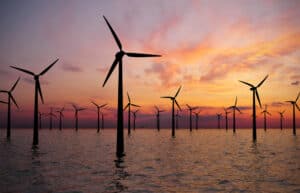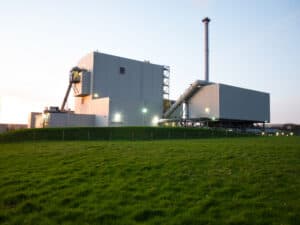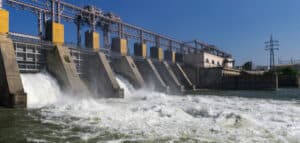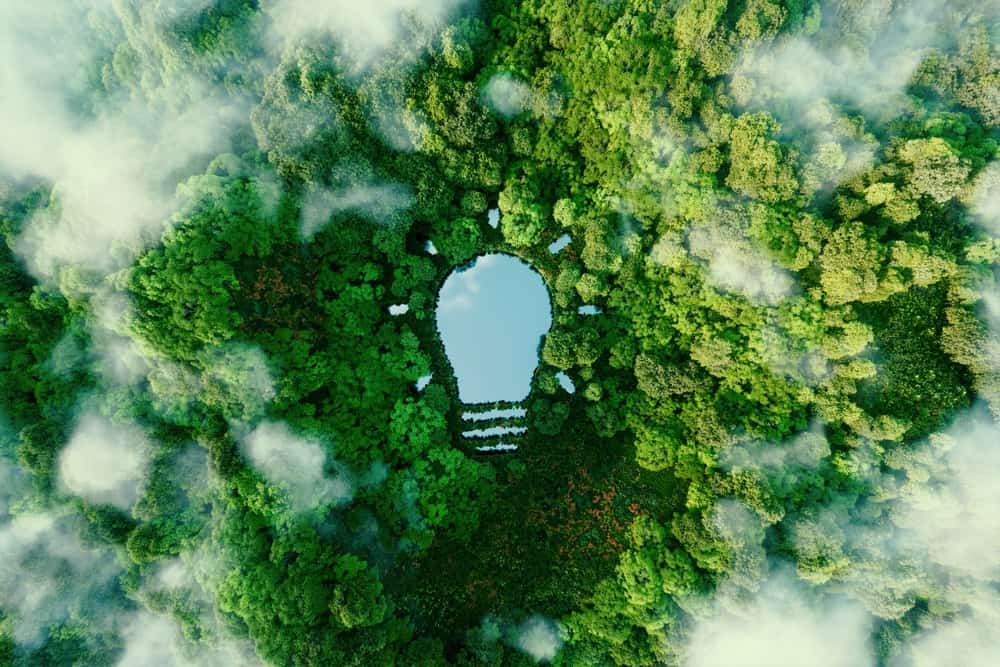Green Energy Solutions
There are several types of green energy solutions. These include Wind farms, Biomass power plants, and Solar panels. Learn about each of them to make an informed decision. You can also use these solutions to improve the value of your property.
There are many benefits to green energy upgrades, including an increase in property value and community values. You may even be inspired to conserve energy and lower your electricity bills. Listed below are a few:
Introduction to Green Energy
Green energy, also referred to as renewable energy, is generated from natural resources that are replenished faster than they are consumed. Unlike fossil fuels, green energy sources produce little or no pollution, making them a more sustainable and environmentally-friendly option.

Why Green Energy Matters
Green energy holds immense importance in today's world, primarily due to its positive impacts on various aspects of our society and environment.
Environmental Impact
One of the key reasons why green energy matters is its ability to address the pressing issue of greenhouse gas emissions. The burning of fossil fuels has long been the primary contributor to greenhouse gases, resulting in global warming and climate change. In contrast, green energy solutions, such as solar, wind, and hydropower, produce little to no greenhouse gas emissions, effectively curbing the adverse effects on our planet's climate.
Economic Benefits
Beyond its environmental advantages, green energy offers substantial long-term economic benefits. Although there may be initial investment costs in implementing green energy solutions, the potential for significant cost savings over time is noteworthy. By reducing dependence on expensive fossil fuels and optimizing energy consumption, businesses and households can experience considerable savings on their energy bills. Additionally, governments often provide incentives and subsidies for adopting green energy technologies, further offsetting the initial expenses and fostering economic growth in the renewable energy sector.
Job Creation
The growth of the green energy sector has led to a surge in job opportunities, contributing to the overall economy and creating employment prospects in diverse fields. The shift towards renewable energy sources has opened up new avenues for skilled workers in manufacturing, research and development, engineering, installation, maintenance, and more. These jobs not only promote technological advancement but also support local communities and improve the overall quality of life.
Energy Independence
Embracing green energy solutions also plays a crucial role in enhancing a nation's energy independence. By reducing reliance on imported fossil fuels, countries can ensure a more stable and secure energy supply. This, in turn, leads to greater control over energy prices, shielding the economy from price fluctuations and geopolitical risks associated with oil-dependent economies. Moreover, cultivating a robust renewable energy infrastructure fosters national resilience and paves the way for a sustainable and secure energy future.
Types of Green Energy Solutions
Geothermal energy
The costs of developing a geothermal plant and its associated power plant weigh heavily in the early stages of the process. The construction of a geothermal field and power plant typically costs around $2500 per installed kW in the U.S.
In addition to this initial investment, operating and maintenance costs can range from $0.01 to $0.03 per kWh. These costs can rise if the power plant is operated at high availability.
The process to extract geothermal power involves drilling a production well and a secondary well to collect the hot water. The hot water rises through the production well and can reach up to 370degC. After the fluid is cooled, it is returned to the field through an injection well to maintain the pressure in the reservoir.
Most conventional geothermal projects use high-quality hydrothermal resources. But if you're interested in learning more about geothermal power plants and how they can help your home or business, here are a few things you should know.
Oil and gas companies may have a lot to gain from geothermal energy. The industry is currently facing oversupply and low prices and is losing jobs. A major challenge in developing geothermal technology is how to explain the benefits of geothermal energy to policymakers and the public.
But geothermal energy has tremendous potential. According to a recent study, the total US geothermal resource is about five times the current installed capacity.
Some geothermal plants use water as a cooling agent and release small amounts of carbon dioxide and sulfur dioxide. These gases are less harmful than fossil fuel power plants, and they can be recycled or reused. Another benefit is that geothermal energy can be used to heat and cool buildings and communities without sacrificing aesthetics.
However, geothermal power plants can also be problematic if they release a lot of steam and contaminate local water sources.

Solar panels
Installing solar panels as green energy solutions is a great way to reduce your power bills while still producing energy. Solar PV systems use daylight for their power production. The electricity they generate is DC (direct current).
This is different from the electricity we typically use in our homes. If you want to use appliances in your home, you'll need to convert the solar panel system's DC current into AC electricity. There are many benefits to solar deployment, so keep reading for more information.
Solar power is renewable and is available all around the world. It is more environmentally friendly than fossil fuels and is cost-effective in the long run. Depending on the size of the solar system, solar panels can save you a significant amount of money on your energy bills.
However, solar power systems require maintenance to keep them working. However, solar power is well worth the initial investment because the savings you'll receive from the system will outweigh the maintenance costs of cleaning the panels.
Solar energy is the cleanest source of energy, and solar panels are very easy to install. The sun's rays are free of pollution and can provide enough electricity for most homes. As solar energy costs fall, it's an attractive option for homeowners who want to reduce their electric bills.
Aside from providing more clean power for their homes, solar power also helps the environment. This means fewer greenhouse gas emissions and less pollution.
Wind energy is another great alternative to solar energy. Large agricultural land can be converted to wind farms. Wind turbines generate electricity using the wind, which is a domestic sustainable resource that's likely to last a long time.
Wind farms are also beneficial to areas where rainfall is scarce or non-existent. These two alternatives are also cost-effective alternatives to fossil fuels. A simple change in the amount of electricity you use will help you reduce your energy bills dramatically.

Wind farms
The United States is home to an abundant supply of wind, a renewable resource with no end in sight. This natural resource is also free of global environmental and economic impacts.
Using wind energy as a green energy solution is a sensible and cost-effective alternative to fossil fuels. Moreover, wind farms are an ideal source of renewable energy because they are often built in depopulated areas that have little or no competition. In addition, wind energy is relatively inexpensive per watt produced and requires little maintenance.
Wind energy has long been harnessed by people and used to propel boats along the Nile River. Windmills were built in China around 200 B.C., and in Persia, vertical-axis windmills ground grain.
Wind farms require thousands of acres of land to be operational, but they create no greenhouse gases. The Lone Star wind farm in Texas, for example, produces 200 megawatts of electricity. Land in between the turbines is used for farming or grazing.
As the growth of wind energy has increased the need for clean energy sources, so have the barriers that stand in the way of their development. However, there is a new focus on the challenges that stand in the way of greater wind power deployment.
In a recent report published by the Solutions Center, the U.S. government outlined a range of policies to promote the growth of wind energy. These examples illustrate the factors that must be considered in developing policies to support wind power deployment.
Another option that is available to help combat climate change is using geothermal energy. Geothermal energy is stored under the earth's crust and requires drilling to access it. Once tapped, it is a vast resource that can produce 10 times more electricity than coal.
Renewable energy is the opposite of fossil fuels, and wind farms produce electricity in many different places. In fact, they are the only solution that does not rely on fossil fuels.

Biomass power plants
The debate over biomass power is raging, as many scientists have warned. The term itself is so broad that literally anything can be categorized as biomass. And while biomass power plants do not create carbon dioxide, they do produce tons of air pollution each year.
And as President Joe Biden pointed out, it would take double the number of trees to produce the same amount of electricity as coal and natural gas combined. As a result, biomass power plants are not environmentally friendly, and the United States Congress has passed legislation to limit the carbon emissions from such plants.
The debate over biomass power is also being shaped by the political climate. In Denmark, biomass power plays a major role in achieving its climate goals, and it is crucial to the country's plan to meet its Paris pledge. Ultimately, biomass power will help meet those goals, but it requires some political sacrifices to replace it.
That's why the issue of biomass as a green energy solution is so complicated.
A recent study conducted by the Massachusetts Environmental Energy Alliance found that biomass burns at 1.5 times the rate of coal. As a result, biomass energy producers are held to a different standard than those who burn fossil fuels.
Biomass power plants also release much of the same airborne toxins as coal plants. That means that the debate is not over, but rather the politics of green energy. So, while biomass power plants are certainly an important source of green energy, there are still several questions left unanswered.
While coal is the primary source of energy in power plants, algae has a greater potential as a biomass energy source. In addition to providing baseload power, algae can be farmed as living organisms and do not require soil.
They also absorb pollutants and carbon emissions. This means that biomass power plants are a great option for helping countries meet their climate goals. And they can also feed back surplus electricity to the grid.

Pumped storage hydropower plants
Pumped storage hydropower plants are a viable option for grid balancing, as they can store enough energy for up to 135,000 households for eight hours a day.
This technology can help decarbonize the power system and avoid blackouts, while also solving the waste problem. Several factors influence the total cost of pumped storage hydropower plants, including the cost of the reservoirs and transmission.
The technology behind these pumped storage hydropower plants uses two reservoirs at different elevations. Pumping water from the lower reservoir to the upper one can be performed using power generated by the grid. The energy generated by these pumped storage hydropower plants is then transmitted through high-voltage transmission lines.
They are an excellent long-term solution, and they offer excellent returns. And because they are emission-free, the technology will help the U.S. electric industry make its transition to emission-free energy resources.
Pumped storage hydro facilities serve as vast ‘water batteries' for renewable energy sources. This type of energy storage is cost-effective and easily scaled-up. In the future, many countries will need a substantial amount of energy storage.
As solar and wind penetration rises, the need for pumped hydro will likely increase ten-fold. By storing energy in these reservoirs, pumped storage hydropower plants will provide much-needed support for renewable energy sources.
There are some disadvantages to pumped storage hydropower systems. Almost all existing PHES systems use river-based reservoirs, and they are often opposed in places where water resources are already scarce. However, alternative ways of constructing PHES plants do not require significant changes to the river system.
For example, underground tunnels and powerhouses can be installed between closely spaced reservoirs with minimal disturbance to the landscape. A two-gigawatt, 350-Gigawatt-hour system is currently under construction in the Kosciuszko National Park in Australia.
Challenges and Solutions in the Realm of Green Energy
The adoption of green energy solutions holds great promise for addressing environmental concerns and reducing reliance on fossil fuels. However, the integration of these eco-friendly alternatives is not without its share of challenges, which necessitate innovative solutions.
- Intermittency: One of the main obstacles faced by renewable energy sources, such as solar and wind power, is their intermittent nature. Unlike conventional power plants that can provide a constant supply of electricity, solar and wind energy generation fluctuates depending on weather conditions. To address this challenge, the industry has been focusing on developing advanced energy storage technologies, such as large-scale batteries, to store excess energy during peak generation periods and release it during periods of low production. Additionally, improvements to grid infrastructure and the implementation of smart grid technologies enable better management and distribution of renewable energy resources.
- Upfront Costs: Another significant hurdle in the widespread adoption of green energy solutions is the substantial initial investment required for the establishment of renewable energy infrastructure. Solar panels, wind turbines, and other renewable energy systems can be expensive to install and maintain. Nonetheless, various governments and organizations have recognized the long-term benefits of transitioning to green energy and have offered financial incentives, tax breaks, and grants to encourage investment in renewable projects. Over time, the substantial savings achieved through reduced reliance on costly fossil fuels can offset and even outweigh the initial costs, making green energy more financially viable.
- Land Use: The implementation of renewable energy projects can demand extensive land or sea space, raising concerns about its environmental impact and potential conflicts with existing land usage. However, thoughtful planning and the adoption of dual-use strategies present effective solutions to this challenge. One such strategy is “agrivoltaics,” where solar panels are integrated into agricultural settings, allowing the land to serve both energy generation and farming purposes simultaneously. By strategically deploying renewable infrastructure in areas with minimal environmental impact and leveraging dual-use strategies, it is possible to minimize land-use conflicts and optimize the benefits of green energy adoption.
Conclusion
As I delve into the world of green energy, I am captivated by the vast potential it holds for our future. Green energy, also known as renewable energy, offers a sustainable and environmentally-friendly alternative to fossil fuels. It matters deeply to me because it addresses pressing issues like climate change and greenhouse gas emissions.
I am inspired by the positive impact green energy has on both the environment and the economy. Despite initial investment costs, the long-term savings and financial incentives make adopting renewable energy financially viable. Embracing green energy not only helps us conserve resources but also creates new job opportunities and fosters economic growth.
Sources:
- U.S. Department of Energy: https://www.energy.gov/energy-101
- National Renewable Energy Laboratory: https://www.nrel.gov/
- International Energy Agency: https://www.iea.org/
- Renewable Energy World: https://www.renewableenergyworld.com/
- GreenBiz: https://www.greenbiz.com/

